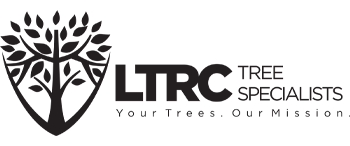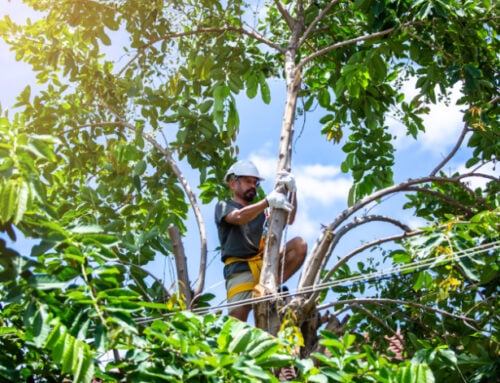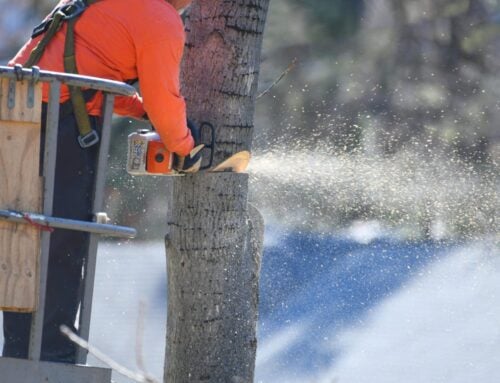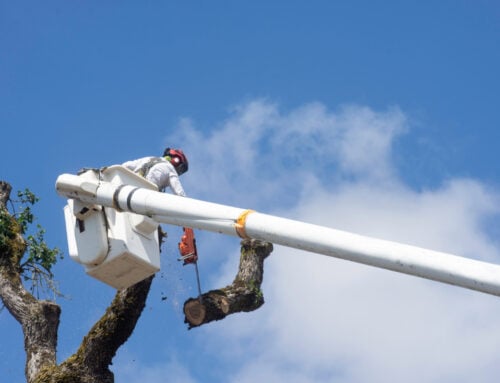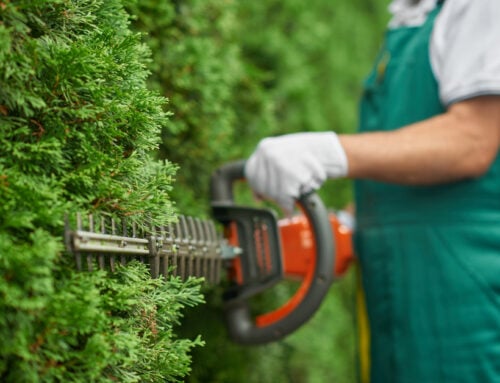How do you know it is time to remove a tree?
As trees age, they become susceptible to disease and damage. An unhealthy tree can be dangerous to you and your property, and often the safest option is tree removal.
Sometimes the warning signs are easy to miss, and you need to do a close inspection or ask a professional to take a look.
Here are the most common indicators that a tree might need removal.
Fungi
Fungi growing around the tree’s base or on the trunk can be a sign of decay.
If you see fungi or mushrooms growing on the trunk, it can infect the trunk and roots and compromise the tree’s structural integrity.
Not all fungi are a problem, but it is best to get a professional to take a look and determine what species it is and the potential damage it is causing.
Soil Lifting
If the soil around the tree’s base is lifting, it could indicate the tree is not anchored or has crown rot.
If a tree leans, it is a sign of a bigger problem occurring beneath the soil, and the tree will need removal before it falls.
Root Damage
A tree needs a healthy root system to survive, and root problems can be the most difficult to detect. Root damage can occur if a tree is not getting enough nutrients or they are rotting.
Root damage can destabilize the tree and it can easily fall during a storm. If you notice holes in your lawn, thin foliage, or a lack of tree growth, it may indicate a problem with the root system.
Dead or Broken Limbs
Dead or broken limbs have an increased risk of falling. If branches are without leaves over the growing months of spring and summer, this will indicate a problem.
It is essential to get the tree checked out or remove dead limbs before the decay spreads to other parts of the tree. Trees with dead limbs could have a pest infestation or a disease.
Loss of Leaves
Many trees will shed their leaves in fall, but if a tree remains barren all year round, it is the first sign of its declining health.
If leaves are smaller than usual or dry and brittle, the limb is probably dead, and there is a high chance it will break.
Leaning
 A leaning tree is not always a problem. The age of the tree and the size of the canopy can help determine if there might be an issue. If the tree leans from the base and the roots have lifted or appear damaged, little can be done.
A leaning tree is not always a problem. The age of the tree and the size of the canopy can help determine if there might be an issue. If the tree leans from the base and the roots have lifted or appear damaged, little can be done.
Smaller trees can be staked, but it is a sign of weakness for larger and more established trees. Tree removal may be the only option if the leaning is combined with other issues, like leaf loss or damaged limbs.
Damaged Bark
The bark is the first line of defense against disease or infection, and it can be the visible indication of a more significant issue. Breakage in the bark exposes the internal wood.
If there are cracks or patches of bark missing, it could mean the tree is malnourished. If there are large cracks, trees are more likely to split or break in those areas.
LTRC Tree Specialists
If you notice any warning signs, it is important to call an arborist to provide advice or organize tree removal. Contact LTRC for assistance. Visit our website or call (404) 977-4574 today!
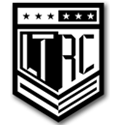
Contact Us For A Free Estimate!
